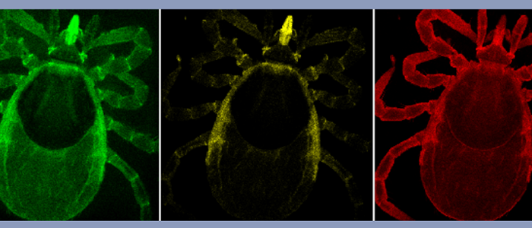COP26 - Viruses and Climate Change
With Glasgow hosting the 26th UN Climate Change Conference of Parties (COP26), we once again turn our focus to the growing problem of climate change and it's global impact. Here at CVR, we will be discussing how climate change can influence the spread of vector borne viruses and increase the chances of a zoonotic event where a virus moves from an animal host to a human one.
The COP26 summit will see the arrival of parties from across the world to discuss the growing challenges of the climate crisis, with the hope of promoting the action needed to protect global communities and secure the planet’s future. The discussion around climate change has been central to discussions in the scientific, political, and economic communities for decades, and the urgency of the already accelerating climate changes warrants major intervention.
The most commonly discussed aspects of climate change are often concerned with the most tangible and visible consequences. Global and local temperatures are reaching record highs with each passing year, extreme weather events are becoming more common, natural environments are eroding at alarming rates, and resource availability is affecting communities globally, particularly in less industrialised regions.
While these tragic events need our attention and our action, we would be remiss to ignore the risk of a now all too familiar threat to the population; the outbreak of viral diseases. In the past two years, the world has seen first-hand what effect a viral pandemic can have. The COVID-19 pandemic saw entire populations isolated, travel and global supply chains compromised, and most tragically, millions of deaths. While the zoonotic event that caused the jump of SARS-CoV-2 into humans may not have been directly caused by climate change, its effect on the spread of viruses has been well documented.
Arthropods such as mosquitos and ticks are vectors for many well-known viruses that cause human disease, including Zika virus, Chikungunya virus, yellow fever, and emerging viruses such as those from the order Bunyvirales. Historically, the activity of common vectors is normally restricted both geographically and temporally. Aedes aegypti mosquitos prefer warm, tropical climates, and the Scottish sheep or deer tick are typically dormant in the winter months when the low temperatures keep them torpid. However, we have seen these previously limited habitable ranges change and grow over time, allowing the expansion of vectors and their viral passengers into new areas. The increased temperatures and longer summer season could result in higher numbers of arthropods, movement to higher latitudes, and longer periods of activity, all leading to an increased chance of human-vector interaction, and therefore viral zoonoses.

These changing vector activities don’t just apply to small arthropods. Larger mammals such as bats, the putative zoonotic source of SARS-CoV-2, have demonstrated changing ranges consistent with seasonal patterns and temperature. As bats encroach on more human territory, and as humans expand into rural areas, the chance of a spillover becomes more and more likely.
Here at the CVR, our research into vector behaviours, habitats, and emerging viruses will provide context into how climate change has and will continue to effect viral zoonoses if left encountered. It is clear that an inability to confront the climate crisis head on with a global effort will increase the risk of a new pandemic, or even era of pandemics, that will see the return of the challenges we faced from SARS-CoV-2, with potentially more severe consequences. During COP26, the CVR will be sharing insight into the observed changes on viral vector patterns and their relationship with climate change. By providing context into the ways in which climate change can affect both human and animal populations, we hope to prevent future spillover events that can lead to another global pandemic.

